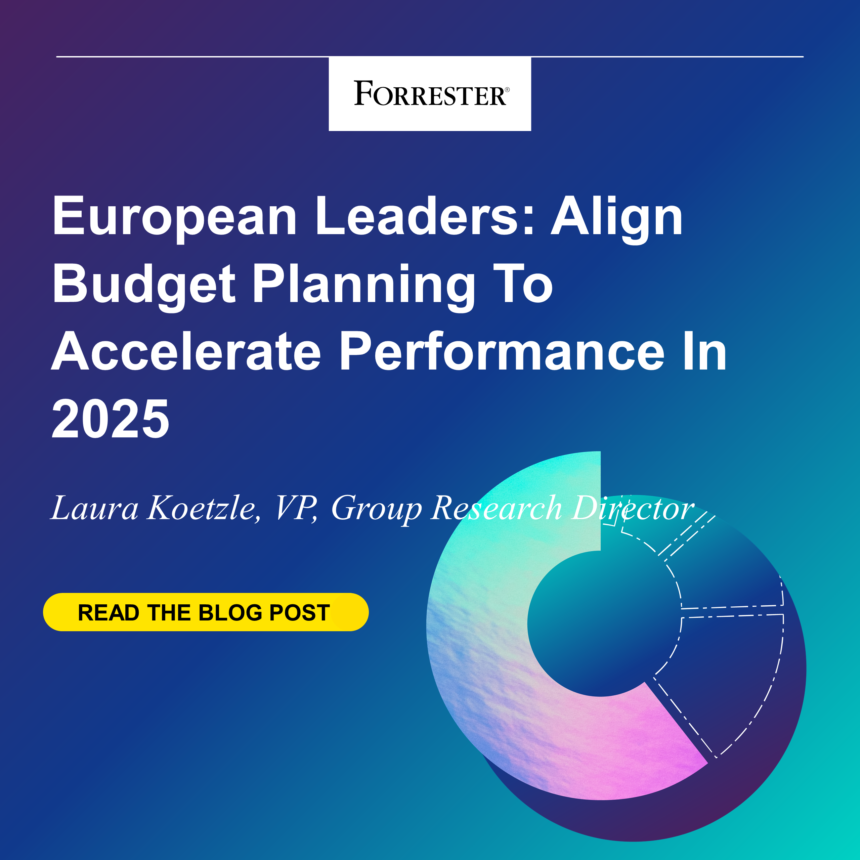Despite continuing conflict in Ukraine and in the Middle East, tight labor markets, and uncertainty about the impact of 2024’s consequential elections, European business and technology leaders return from their August holidays to a mildly positive economic outlook for 2025, with inflation expected to drop to 2.2% and GDP projected to grow at 1.5%. Hence, Forrester’s recent global survey of 2,200 business and technology decision-makers reveals that leaders across most functions and industries anticipate budget increases, albeit modest ones. Upbeat budget expectations for 2025 will serve European leaders well, but placing the right bets will be critical to securing a competitive edge.
To help you plan and budget in this environment, we have produced Forrester’s 2025 Budget Planning Guides. These guides provide data-driven insights and advice to help technology, marketing, customer experience (CX), digital, sales, and product leaders make the right spending decisions for the year ahead. (Clients can access our Budget Planning Guides here; non-clients can read select guides here.) Along with recommendations for where to invest, the guides can help you identify areas to pull back on spending and opportunities to experiment to fuel new growth.
While we encourage you to explore the guides in depth, here are a few key actions to prioritize in 2025:
- Strengthen cross-functional alignment to deliver connected experiences. Strong alignment leads to better outcomes: Leaders whose marketing, digital, and CX teams are highly aligned report 1.6x faster revenue growth than their peers and 1.4x better customer retention, Forrester data shows. Help ensure functional alignment around customer journeys by investing in a shared journey atlas and prioritizing key journeys — hire an outside partner to assist and train your team if necessary.
- Invest in capabilities and frameworks for AI governance and trust. Governance is a prerequisite to trust in AI that requires guardrails and policies for data access, usage, sharing, storage, and retention. It also requires investing in security and privacy, including approaches like advanced encryption, data masking, differential privacy, and data clean rooms. To retain the trust of customers and employees as you deploy AI, identify and prioritize the levers of trust that matter most to them in your context.
- Shed bespoke or isolated tech stacks. Years of teams building and maintaining their own applications or insisting on idiosyncratic “ideal” architectures has resulted in massive technology sprawl and technical debt. This results in unsustainable cost, support, security, and training overhead. It’s time to inventory your bespoke applications and isolated infrastructure that serves just one or a few applications and replace them — even though addressing that sprawl will require some upfront investment.
- Experiment with new AI coworkers to support prospects and customers. Access to AI-powered chatbots and assistants to support buying, selling, and internal marketing processes is already on the path to becoming an expectation, not an experiment. These chatbots and assistants are firmly embedded in the B2B martech stack and working alongside human counterparts to enable a range of lifecycle revenue marketing use cases. Design these AI assistants to have skills that support go-to-market teams with information retrieval, task automation, insights exploration, and recommendations that drive precision, productivity, and scale.
Our 2025 Budget Planning Guides explore these recommendations in greater depth and provide additional function-specific insights to help you plan and budget with confidence.
Note: Ayşe Yedekçi-Schelhaas contributed to this blog post.








